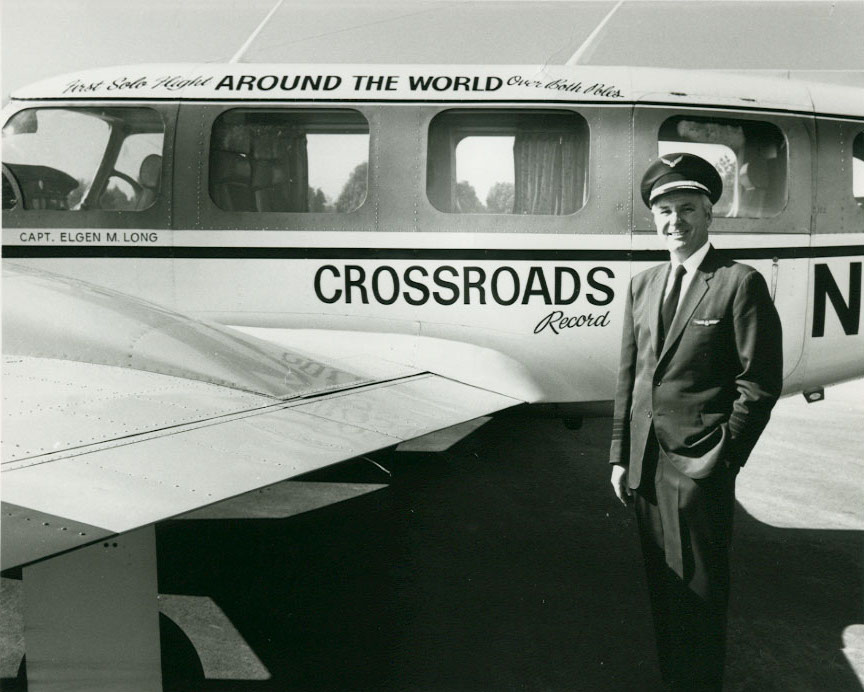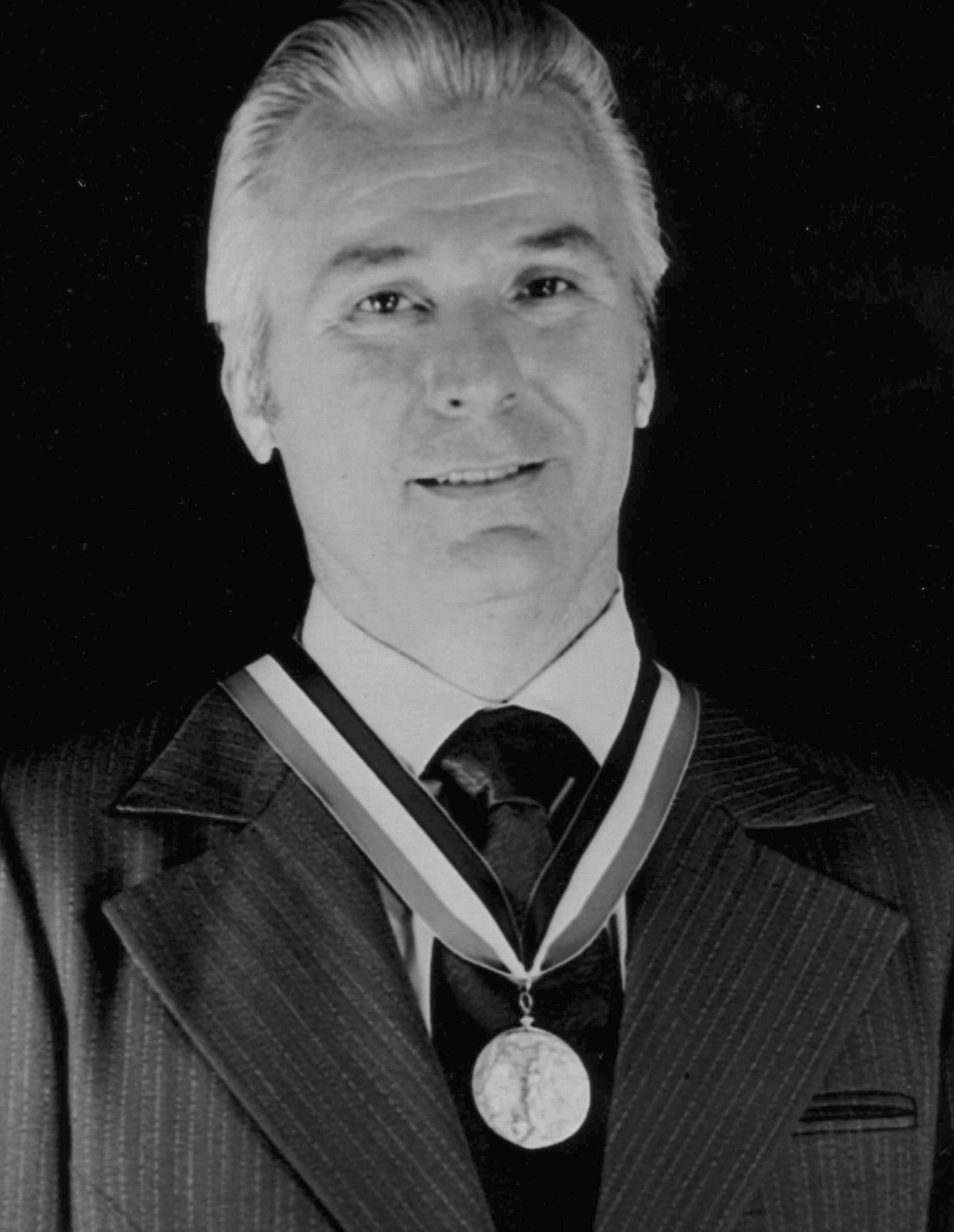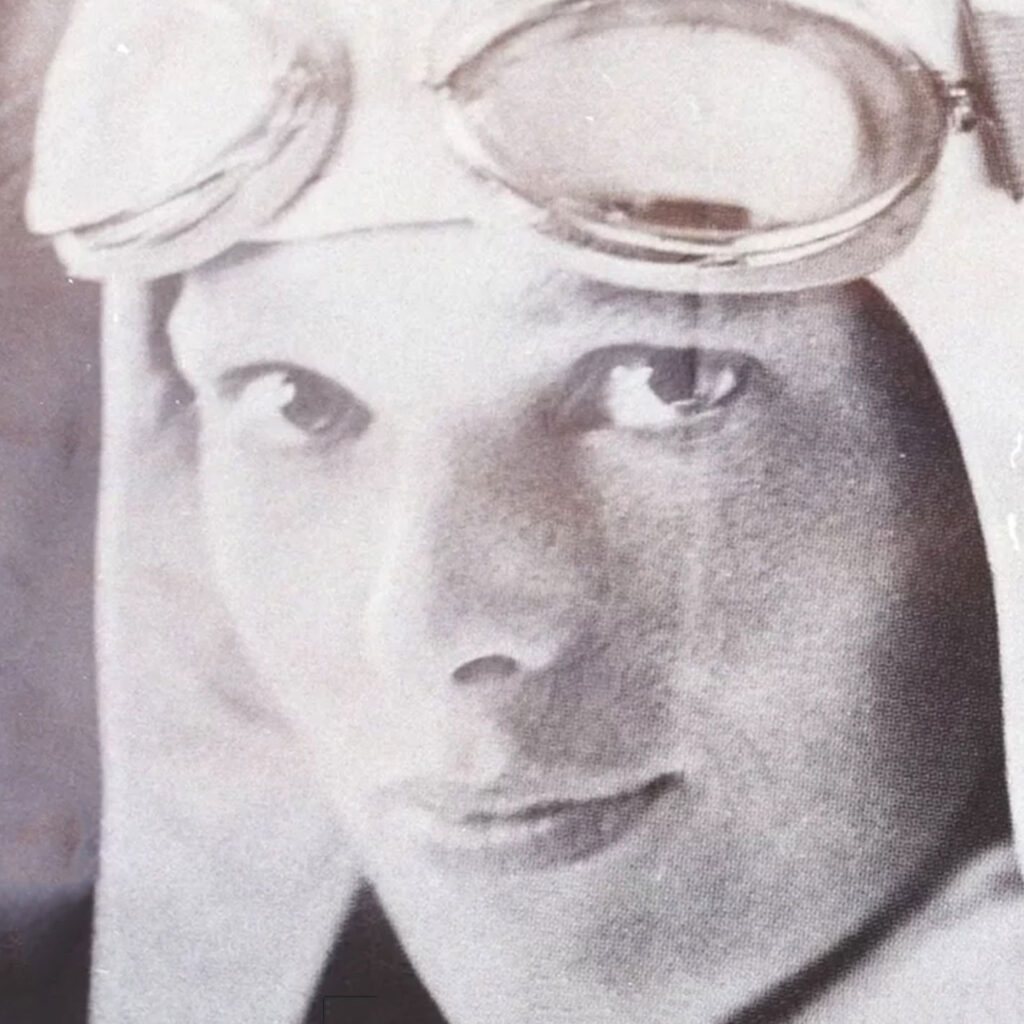
This December 2016 marked the 45th anniversary of a most remarkable flight and a record-breaking achievement: Elgen Long’s solo flight around the world over the poles.
Elgen began his career in flight while still in his teens as a seaplane radioman and navigator for combat missions during World War II. Later during his 40-year career as captain in the Flying Tiger Line, he flew many cargo missions in the Arctic, supplying remote Air Force stations. When he retired from the Flying Tigers, Elgen had a dream – to fly around the world crossing the equator at the Prime Meridian and over both poles.
The journey would be arduous. Even after installing four additional fuel tanks in his twin engine Piper Navajo to give the plane a 4,000-mile range, Elgen knew that he would have to make major alterations of his speed and altitude to achieve the long distances required for some of the longer legs of his voyage. He used his knowledge of celestial navigation extensively throughout the trip with a back-up inertial navigation system designed for 747s installed in his considerably smaller plane.
As he began the round-the-world flight with a leg from San Francisco to Fairbanks, Alaska on November 5th 1971, Elgen experienced his first problem of the month long adventure: severe icing conditions clogged the cockpit heater, and the cabin temperature plummeted. Elgen’s down-filled jumpsuit, gloves and boots prevented him from suffering from anything worse than chattering teeth!
After only five hours sleep, he began the frigid flight to Stockholm, passing directly over the North Pole on November 7th. Because of extremely low temperatures, he chose to make a precautionary fuel stop in Norway, and so when he landed in Sweden after a trip of 3,906 miles he realized that he’d been awake for 34 hours. After a brief rest, it was on to London, where he bought additional long underwear, and took off for Accra, Ghana. After leaving Accra, Elgen crossed the Prime Meridian at the equator then went on to Recife, Brazil. The most dangerous and demanding leg of his flight, across Antarctica to McMurdo Sound, began with perfect weather, but it deteriorated when a storm blanketed the continent. His view of the South Pole was to be nothing but clouds, but Elgen was fortunate to land safely at McMurdo since a blizzard closed the airfield a short time later!

The flight to Sydney and then Fiji passed pleasantly and Elgen passed the 180th meridian or antimeridian at the equator. He flew on to Tokyo then to Honolulu and finally headed back to his home. On December 3rd 1971 Captain Elgen Long brought his Piper Navajo to a stop in the rain at the San Francisco International Airport, and a welcoming crowd waved a banner reading, “You’ve Come a Long Way Baby.” By completing a 36,000-mile record-breaking flight around both poles, he indeed had flown a very long way.
Elgen Long’s dream flight set three Federation Aeronautique Internationale records and many firsts. His was the first flight around the world with landings on all seven continents, the first solo flight around the world across both poles, the first solo flight across Antarctica, the first flight crossing the equator at both the prime and 180th meridians to name just a few. Elgen was the 13th American awarded the Gold Air Medal. Previous winners of this prestigious award include James Doolittle, Igor Sikorsky and Charles Lindbergh.
Nauticos began working with Elgen Long because he had another dream, to solve the mystery of the disappearance of Amelia Earhart. His book, Amelia Earhart: The Mystery Solved, is a culmination of 25 years of research and interviews. Elgen believes that the most credible evidence concludes that upon fuel exhaustion, Earhart was forced to ditch her plane into the sea near Howland Island.
Nauticos is poised for the search to make Elgen’s latest dream come true.



